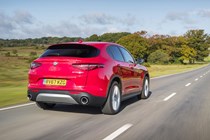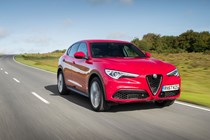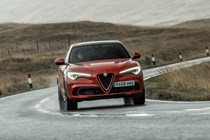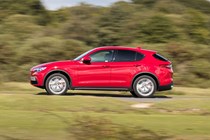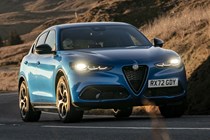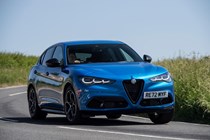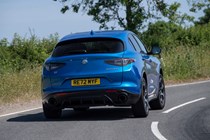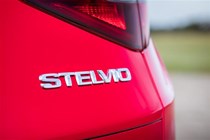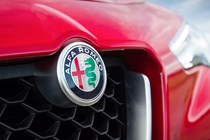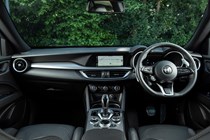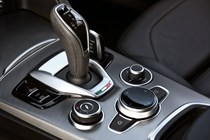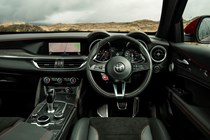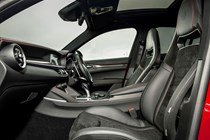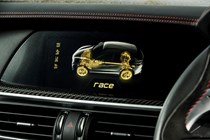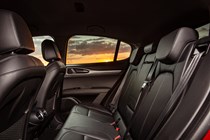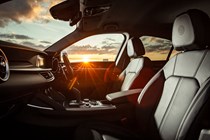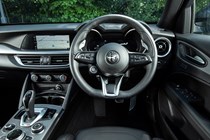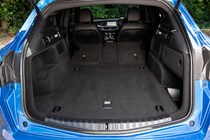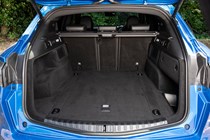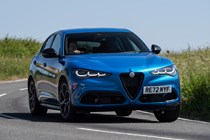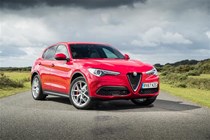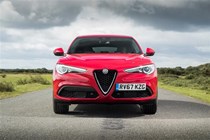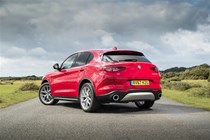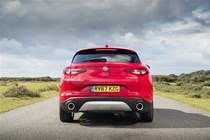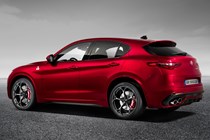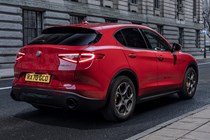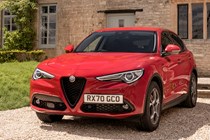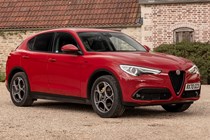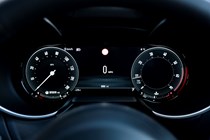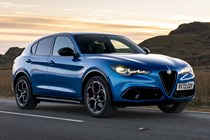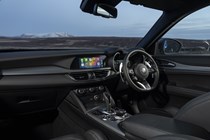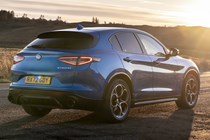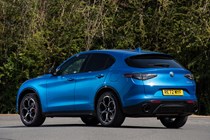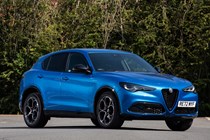
Alfa Romeo Stelvio engines, drive and performance
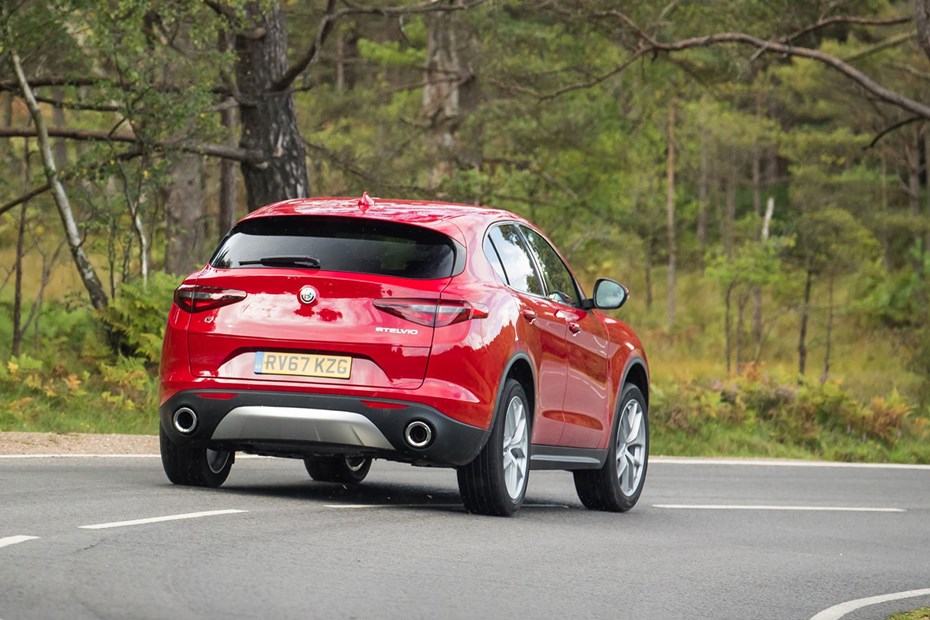
- Limited choice, but powerful engines
- Responsive and good to drive
- Doesn’t sound as exciting as an Alfa Romeo should
Petrol engines
The only petrol option is a 2.0-litre four-cylinder turbocharged engine that produces 280hp and 400Nm of torque (pulling power). The raw performance figures are 0-62mph in 5.7sec and 143mph flat out, and it’s certainly keen to get going on the road – helped by an impressively low (for an SUV) kerbweight of 1,660kg.
The eight-speed automatic – the same ZF transmission used by a number of other car makers, including BMW and Jaguar – provides snappy manual changes but also works intuitively when left to its own devices.

That said, the petrol doesn’t sound especially inspiring, and it lacks the high-revving zing you might expect from a sporty Alfa Romeo engine. So it’s fast, but not especially soulful. It is still the engine we would choose if running costs were no object.
Diesel engines
The 210hp 2.2-litre diesel does 0-62mph in 6.6sec and has a 133mph top speed. Despite this – and 470Nm of torque – we thought it felt a little slow. This probably wasn’t helped by the high-altitude Alpine test route, and on most roads it feels more than up to the job of hauling the Stelvio around.
At 1,659kg it weighs almost exactly the same as the petrol, and produces its performance smoothly enough. But it also sounds very thin and reedy, which becomes quite grating over time – especially as there’s more engine noise inside than you might expect from a car of this class.
What’s it like to drive?
- Sharp steering is very unlike an SUV
- Agile handling and limited body roll
- Keen responses for such a large car
Alfa Romeo throws around all sorts of complex terminology – such as ‘semi-virtual steering axis’ and patented ‘four-and-a half-link’ rear suspension – when describing the Stevlio’s underpinnings.
The firm is proud to boast how balanced the Stelvio is with its 50:50 weight distribution front to rear, but all you really need to know is that for an SUV it stays remarkably flat even when tackling tight corners. In fact, Alfa Romeo reckons it not only out-performs all its direct rivals in this regard, but that the Stelvio rolls less than some competitors’ saloon cars.

Certainly its resistance to lean is very impressive, and with the super-sharp steering – which is most definitely quicker than any alternative SUV – you can cut quite the dash along a mountain road. The steering is not especially communicative like it is in a Porsche Macan, but it’s certainly more engaging than the equivalent Volvo or Audi.
This is where you start to pay the price for that keen cornering capability. To keep a big, tall car like the Stelvio upright in the turns you need firm suspension, and this does have an impact on ride comfort.
The diesel feels impressively well damped at first – especially considering it can come fitted with larger 19-inch alloy wheels. However, on less pristine surfaces it begins to exhibit a jiggling sensation that if not actually uncomfortable, certainly veers strongly towards the annoying.
By comparison, the petrol – also available with 19-inch wheels – immediately feels firmer, more uncompromising, and more unsettled at the back. The petrol is dynamically superior to the diesel, so this makes some sense. The engines can be a little gruff as well – both petrol and diesel – and that you can hear a little too much of the diesel for a premium car.
Road noise is on a par with some rivals, though, even on the optional 19-inch alloy wheels. An optional Performance Pack is available which furnishes the Stelvio with a more sophisticated suspension setup from the Quadrifoglio, but this actually makes regular versions more comfortable. That said, it’s still less comfortable than an equivalent Volvo XC60 or Mercedes-Benz GLC.



